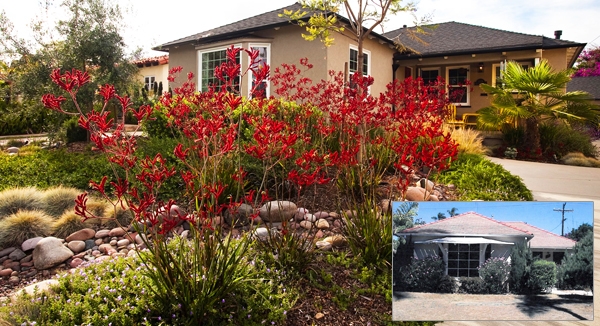
A recent paper from Pittenger and Hodel suggested that, at 9 percent, landscape water was not a large part of the overall California water picture. While I understand the desire to defend urban landscapes and justify the amount of water currently used to maintain them, I believe that view is short-sighted and would benefit from a broader perspective. For example, we should take into account both the history of drought in California and the profound changes caused by global warming that have begun and are predicted to accelerate as the century progresses.
The historic record of our region's climate over the past 2,000 years has been scientifically reconstructed from paleoclimate records. Researchers have studied the growth rings of long-lived trees and ancient stumps at the bottom of Mono Lake as a form of geological record that reveals previous water levels, as well as analyzed deposits deep under San Francisco Bay that collect sediment from a large watershed. The research and its implications are presented in “Climate Change and Paleoclimatology: 2013/2014 in Perspective” by Lynn Ingram, professor of Earth and Planetary Sciences at UC Berkeley.
Dr. Ingram suggests that we have experienced some of the warmest years on record since the turn of the century. She notes that the paleoclimate record shows that past periods of warming were associated with drier conditions in California. We currently have difficulty coping with droughts that last less than a decade, but during the medieval warm period there were two century-long droughts that had 60-70 percent of average precipitation. Indeed, our climate is influenced by cyclical patterns and Ingram states that “we see wet/dry cycles over the past 2,000 years with periods of 30, 65, 90, and 200 years.” She also states that “the past 150 years have been unusually wet when viewed over the past 2,000 year period. The 20th century was a wetter century and this is when all our water development population growth and agricultural industry were established.”
Ingram concludes “it's possible the climate may now be shifting to a drier regime. We have already seen the impact of warming that's been occurring since 1960. We are seeing a reduced snowpack that will continue into the future, and a drier climate with increased evaporation rates, so we'll have drier soils, more frequent wildfires, and increased dust levels.” It is also predicted that we will have a more extreme climate that will produce larger floods and deeper droughts in the future.
Considering the data and its implications, it's difficult to justify maintaining the status quo with respect to the use of water for landscape irrigation. Our water pie is not as large as we thought it was and it will need to serve more people in the future as our population continues to increase. We will pay more for water and have less to use, although this may be alleviated somewhat by desalination and reclaiming waste water. For example, the city of San Diego plans to raise water rates by 41% over the next five years. It also has a large desalination plant under construction and is considering claiming potable water from sewage water.
Potable water has been plentiful and cheap for several decades and as a consequence, we have not considered it a valuable resource. This attitude has begun to change during the drought, which is good because future conditions will require us to use water more efficiently and curtail wasteful practices. I believe it would be beneficial for the urban landscape sector to be proactive in this effort. We should lead by example and do what is needed to create sustainable water-wise landscapes that are less dependent on supplemental irrigation with potable water.
Using as much water as you desire and can afford and applying more potable water on a landscape than a site normally would receive from annual precipitation is not a sustainable practice. Realistic limits should be set on the amount of potable water used for landscape irrigation. We should encourage the creation of natural landscapes that require little supplemental irrigation. The current drought has provided an opportunity to reevaluate our landscapes, and the lessons we are learning on how to have functional landscapes with less water should not be forgotten, even if a rainy El Niño year temporarily refills reservoirs.
Vincent Lazaneo is Urban Horticulture Advisor Emeritus with the University of California, Division of Agriculture and Natural Resources.